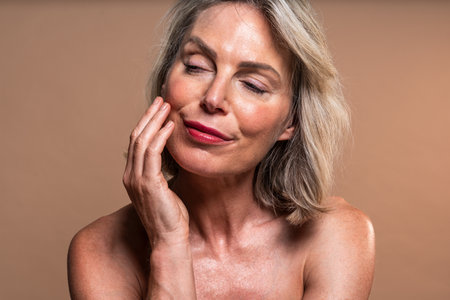Understanding Sun Damage
When we talk about sun damage, were referring to the harmful effects that ultraviolet (UV) rays from the sun have on your skin. In the United States, where outdoor activities and sunny days are a big part of our lifestyle, exposure to these rays is almost unavoidable. Sun damage isn’t just about getting a sunburn; it’s a long-term concern that affects your skin’s health and appearance over time. The American climate—whether youre in the hot deserts of Arizona, the humid beaches of Florida, or even during winter months in the north—means UV exposure can happen year-round. This constant exposure accelerates aging signs like wrinkles and fine lines, making it an important issue for anyone who cares about their skin. Understanding what sun damage truly means is the first step in protecting yourself and maintaining healthy, youthful-looking skin.
2. The Science Behind UV Rays and Skin Aging
When it comes to sun damage, understanding how ultraviolet (UV) rays affect your skin is key to preventing premature aging. Sunlight emits two main types of UV rays that reach the earth’s surface: UVA and UVB. While both play a role in damaging your skin, they do so in different ways, each contributing to wrinkles, fine lines, and other visible signs of aging.
UVA vs. UVB: What’s the Difference?
| Type of UV Ray | Penetration Depth | Main Effects on Skin |
|---|---|---|
| UVA | Deep into dermis (middle layer) | Causes long-term skin damage, premature aging, wrinkles, and age spots |
| UVB | Superficial epidermis (outer layer) | Responsible for sunburns, DNA damage, and contributes to skin cancer risk |
How UV Rays Break Down Skin Structure
UVA rays penetrate deep into the skin, breaking down collagen and elastin fibers—the building blocks that keep your skin firm and elastic. Over time, this leads to sagging skin, wrinkles, and a leathery texture. On the other hand, UVB rays target the surface layers, directly damaging DNA in skin cells. This not only causes painful sunburns but also triggers cellular mutations that accelerate the visible aging process.
The Chain Reaction of Sun Exposure
Every time you step outside without protection, your skin absorbs both UVA and UVB rays. This triggers a chain reaction:
- Immediate response: Inflammation and redness as your body tries to repair damage.
- Cumulative effect: Repeated exposure leads to permanent changes—loss of elasticity, development of fine lines, and uneven pigmentation.
- Long-term impact: Both types of rays contribute to photoaging (premature aging from sun exposure) and increase your risk for skin cancer.
The Bottom Line
The science is clear—unprotected exposure to UVA and UVB rays accelerates the aging process by damaging the very structure of your skin. Consistent sun protection is crucial if you want to keep wrinkles and fine lines at bay as you age.

3. Visible Signs: Wrinkles, Fine Lines, and More
When it comes to aging skin, the effects of sun exposure are hard to ignore. One of the most telling signs is the early appearance of wrinkles and fine lines, which often show up years before they might naturally occur. UV rays from the sun penetrate deep into the skin’s layers, breaking down collagen and elastin—the proteins responsible for keeping our skin firm and elastic. As these vital building blocks deteriorate, skin loses its smoothness and begins to crease and sag.
Besides wrinkles and fine lines, chronic sun exposure can also cause uneven skin tone, age spots (often called “sun spots” or “liver spots”), and a rough, leathery texture. These changes are especially noticeable on areas that get the most sun, like the face, neck, arms, and hands. Over time, repeated exposure makes these visible signs more pronounced.
It’s important to understand that even brief periods in the sun can add up over the years. The cumulative effect accelerates the breakdown of skin structure—making those crow’s feet around your eyes or lines across your forehead appear earlier than expected. In short, unprotected sun exposure is one of the leading causes of premature aging you can actually see in the mirror.
4. Why Americans Should Care
In the United States, our lifestyles often revolve around spending time outdoors, whether it’s hiking national parks, playing sports, enjoying beach vacations, or simply running daily errands. The American love for outdoor activities means that sun exposure is a regular part of life. Unfortunately, this also increases the risk of sun damage, which accelerates aging signs like wrinkles and fine lines. Protecting your skin isn’t just about vanity—it’s about maintaining long-term health and confidence.
The Impact of Sun Damage on Everyday Activities
| Activity | Typical Sun Exposure | Recommended Protection |
|---|---|---|
| Jogging/Walking | 30-60 minutes/day | Sunscreen (SPF 30+), hat, sunglasses |
| Beach Trips | 2-6 hours/session | Broad-spectrum sunscreen (reapplied every 2 hours), UPF clothing, shade breaks |
| Outdoor Sports | 1-3 hours/game | Sunscreen (water-resistant), protective gear, reapplication during breaks |
| Gardening/Yard Work | 1-4 hours/session | Sunscreen, long sleeves, wide-brimmed hat |
The Importance of Skin Protection in Daily Routines
Integrating sun protection into your daily routine is essential for Americans of all ages and backgrounds. The cumulative effects of UV exposure can lead to premature aging, hyperpigmentation, and even skin cancer. By making simple changes—like applying sunscreen every morning, wearing protective clothing when outside, and seeking shade during peak sunlight—you can dramatically reduce your risk of sun-related skin damage.
Cultural Emphasis on Youthfulness and Health
American culture places a strong value on youthful appearance and active living. Taking proactive steps to protect your skin aligns with these values by helping you look and feel your best for years to come. Remember: investing a few extra minutes each day in skin protection pays off in healthier, younger-looking skin down the road.
5. Smart Protection: Sunscreen and Beyond
If you want to keep your skin looking young and healthy, taking a proactive approach to sun protection is crucial. While sunscreen is often the first thing that comes to mind, there’s much more you can do to shield yourself from UV rays and slow down the aging process.
Sunscreen Habits That Work
Choose a broad-spectrum sunscreen with at least SPF 30, and make it part of your daily routine—even on cloudy days or when you’re mostly indoors. Dermatologists recommend applying sunscreen 15 minutes before heading outside and reapplying every two hours, or more frequently if you’re swimming or sweating. Don’t forget easy-to-miss spots like your ears, neck, and the backs of your hands.
Dressing for Defense
Your clothing can be one of your best defenses against UV exposure. Opt for tightly woven fabrics, long sleeves, and wide-brimmed hats to cover as much skin as possible. Many brands now offer clothing with built-in UPF (Ultraviolet Protection Factor), which adds an extra layer of defense without sacrificing comfort or style.
Shade: Your Best Friend Outdoors
Whenever possible, seek shade—especially between 10 a.m. and 4 p.m., when the sun’s rays are at their strongest. Whether you’re at the beach, out for a hike, or enjoying a backyard BBQ, positioning yourself under umbrellas, trees, or canopies can make a big difference in minimizing sun damage.
Small Changes, Big Results
Combining these strategies—consistent sunscreen use, smart clothing choices, and making shade a habit—can significantly reduce your risk of premature aging caused by the sun. Remember, protecting your skin isn’t just about looking younger; it’s about maintaining your skin’s overall health for years to come.
6. Long-Term Solutions and Skin Care Routines
When it comes to reversing sun damage and maintaining a youthful glow, consistency is key. Here’s how you can care for your skin long-term and reduce the visible signs of aging caused by UV exposure:
Prioritize Daily Sun Protection
Make broad-spectrum sunscreen (SPF 30 or higher) a non-negotiable part of your morning routine—even on cloudy days. Don’t forget often-missed spots like your ears, neck, and the backs of your hands. Reapply every two hours if you’re outdoors.
Incorporate Antioxidants
Topical antioxidants like vitamin C serum help neutralize free radicals caused by sun damage, brighten dull skin, and support collagen production. Pair this with a balanced diet rich in fruits and vegetables for added benefits from within.
Use Retinoids for Renewal
Retinoids (like retinol) are a gold standard for smoothing fine lines, improving skin texture, and supporting cell turnover. Start slowly to minimize irritation, and use at night alongside a gentle moisturizer.
Hydrate and Repair
A good moisturizer helps strengthen your skin barrier, locking in hydration that keeps wrinkles at bay. Look for ingredients like hyaluronic acid, ceramides, or peptides that support repair and resilience.
Professional Treatments
If sun damage is advanced, consult a dermatologist about treatments such as chemical peels, microdermabrasion, or laser therapy to address deeper wrinkles or pigmentation issues.
Practice Consistency and Patience
The most effective anti-aging routines require ongoing commitment—don’t expect overnight miracles. With daily protection and targeted skincare products, you’ll notice brighter, smoother skin over time while helping prevent future sun-related aging.


